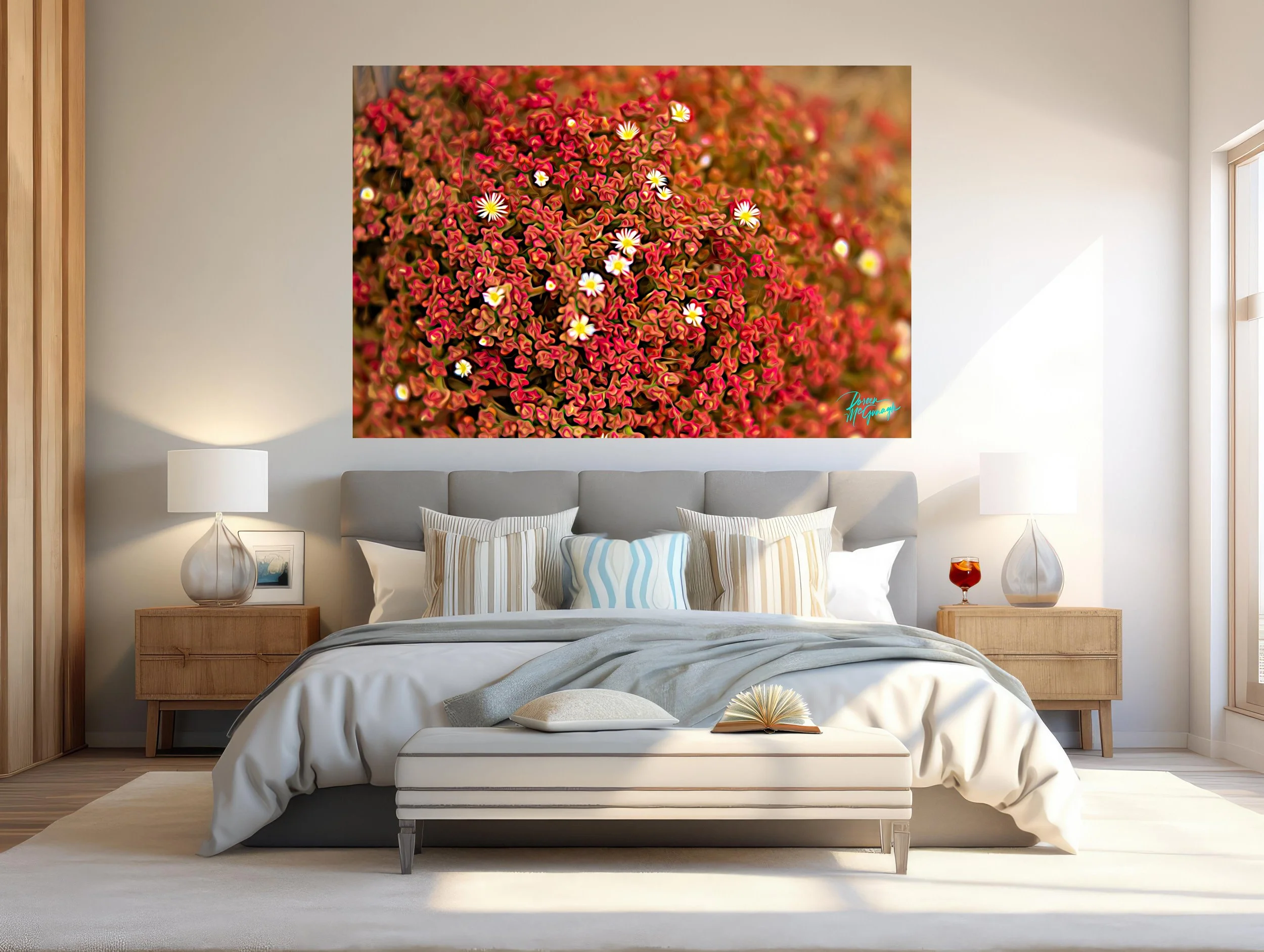Mastering Nature Macro Photography: Tips and Techniques with Fine Art Photographer Doreen McGunagle
Title: "Mastering Nature Macro Photography: Tips and Techniques by Doreen McGunagle"
Macro photography is a fascinating world of intricate details and captivating beauty that often goes unnoticed by the naked eye. In the realm of nature macro photography, Doreen McGunagle stands out as one of the top photographers, capturing life-size images of tiny subjects with exceptional clarity and artistry. In this blog post, we'll delve into the enchanting world of macro photography, explore the techniques that Doreen McGunagle employs, and discover how you can improve your own nature macro shots.
The Magic of Nature Macro Photography
Macro photography, often referred to as close-up photography, allows photographers to capture small subjects in astonishing detail. It's a genre that has gained immense popularity among nature photographers, and for good reason. The ability to reveal the intricate details of small things in the natural world brings forth a whole new world of beauty.
One of the great things about macro photography is that it doesn't require expensive equipment or exotic locations. You can find fascinating subjects right in your own backyard, at a local park, or in a nature reserve. The key is to look closely and appreciate the smaller things that make up our amazing world.
Verdant Serenity
This captivating artwork transports you to a realm of serenity, where nature's delicate dance meets the end of summer's embrace. Learn more
The Importance of Shallow Depth of Field
One of the essential techniques in macro photography is achieving a shallow depth of field. This technique allows you to isolate the main subject while creating a beautifully blurred background, also known as bokeh. To achieve this effect, you can use a small aperture (represented by a large f-stop number), which results in a narrow depth of field. A popular choice for macro photographers is an aperture setting between f/2.8 and f/5.6.
Additionally, using a fast shutter speed is crucial to avoid camera shake. Tiny subjects can be incredibly sensitive to even the slightest movement, so it's essential to stabilize your camera using a tripod or other support. Mirrorless cameras are becoming a favorite among macro photographers due to their lighter weight and compact size, making them easier to handle in the field.
Choosing the Right Equipment
Doreen McGunagle, like many top macro photographers, prefers to use extension tubes to get even closer to her subjects. These tubes can be added between the camera body and the lens, allowing for higher magnifications and the ability to focus on subjects that are extremely close. When combined with a dedicated macro lens, such as a 100mm f/2.8, you can capture fine details that are invisible to the naked eye.
Focal length plays a significant role in macro photography as well. A longer focal length lens, such as a 100mm or 150mm, allows you to maintain a more comfortable working distance from your subjects. This is especially important when photographing small creatures like insects, as you don't want to scare them away.
Mastering Manual Mode and Focus
While many photographers rely on autofocus, macro photography often requires manual focus to ensure that the most crucial elements of your subject are sharp and in focus. Many modern cameras offer focus peaking, which highlights the areas in focus in real-time, making it easier to achieve sharp focus.
In addition to manual focus, setting your camera to manual mode gives you full control over your exposure settings. Adjusting the aperture, shutter speed, and ISO allows you to fine-tune your shots and capture the best possible image quality. Remember that macro photography often requires slower shutter speeds to compensate for the smaller aperture, so it's crucial to use a tripod and stable platform to avoid camera shake.
Exploring Interesting Subjects
The beauty of macro photography is that there is no shortage of interesting subjects to capture. From the delicate petals of beautiful flowers to the intricate details of tiny creatures, nature provides an abundance of possibilities. One of the exciting aspects of macro photography is that it allows you to explore the world from a different perspective. You'll discover a whole new level of detail and complexity in even the most common objects. Doreen McGunagle, a U.S.-based photographer known for her stunning macro images, often seeks out different angles and compositions to highlight the unique aspects of her subjects.
One of the exciting aspects of macro photography is that it allows you to explore the world from a different perspective. You'll discover a whole new level of detail and complexity in even the most common objects. Consider experimenting with different colors, textures, and lighting conditions to create captivating images that tell a story.
Ethical Considerations in Macro Photography
When photographing tiny creatures and their natural habitat, ethical photography practices are essential. It's crucial to minimize disturbance to the subjects and their environment. Always prioritize the well-being of the creatures you're photographing and avoid any actions that could harm them or their habitat.
Additionally, respecting the laws and regulations regarding wildlife photography is essential. Different regions and countries may have specific guidelines in place to protect local flora and fauna, so make sure to research and follow these rules.
The Role of Natural Light
Natural light is often the best choice for macro photography. It allows you to capture the vibrant colors and details of your subjects with minimal interference. Shooting during the early morning or late afternoon can provide soft, warm lighting that enhances the beauty of your macro shots.
To further control and manipulate the light, you can use diffusers and reflectors to soften harsh shadows or add a touch of fill light to your subjects. These tools can help you achieve the desired mood and atmosphere in your macro images.
Getting Closer with Extension Tubes
Extension tubes are valuable tools in the macro photographer's kit. These tubes are inserted between your camera body and lens, allowing you to focus on subjects much closer than with a standard lens. They come in various lengths, providing different levels of magnification.
When using extension tubes, it's essential to be aware of the working distance—the distance between your lens and the subject. A longer extension tube will give you higher magnification but may require you to get very close to your subject. This can be challenging when photographing tiny creatures that are easily startled. So, choosing the right combination of extension tube length and lens is crucial for capturing your desired shots.
Creating Stunning Macro Images
To create stunning macro images like Doreen McGunagle and other top macro photographers, it's essential to pay attention to the details. Focus on achieving sharp focus on the main subject while using a small aperture to create a shallow depth of field and a pleasing bokeh background. Mastering manual mode and understanding your camera settings will give you full creative control over your shots.
Remember to explore different angles, compositions, and lighting conditions to capture the beauty of your chosen subjects. Whether you're photographing delicate flowers, tiny creatures, or intricate details, nature macro photography offers a whole new world of artistic possibilities.
Conclusion
Nature macro photography is a captivating genre that allows you to explore the hidden beauty of the natural world. With the right techniques and equipment, you can capture stunning images that reveal the intricate details of tiny subjects. Doreen McGunagle, a renowned fine art nature photographer, has mastered the art of macro photography, and her work serves as an inspiration for aspiring photographers.
By understanding the importance of shallow depth of field, choosing the right equipment, mastering manual mode and focus, and exploring interesting subjects, you can elevate your macro photography skills to new heights. Remember to always practice ethical photography, respect the natural habitat, and prioritize the well-being of your subjects.
So, grab your camera, head outdoors, and embark on a journey into the mesmerizing world of nature macro photography. You'll discover an amazing world of beauty that's waiting to be captured through your lens.

